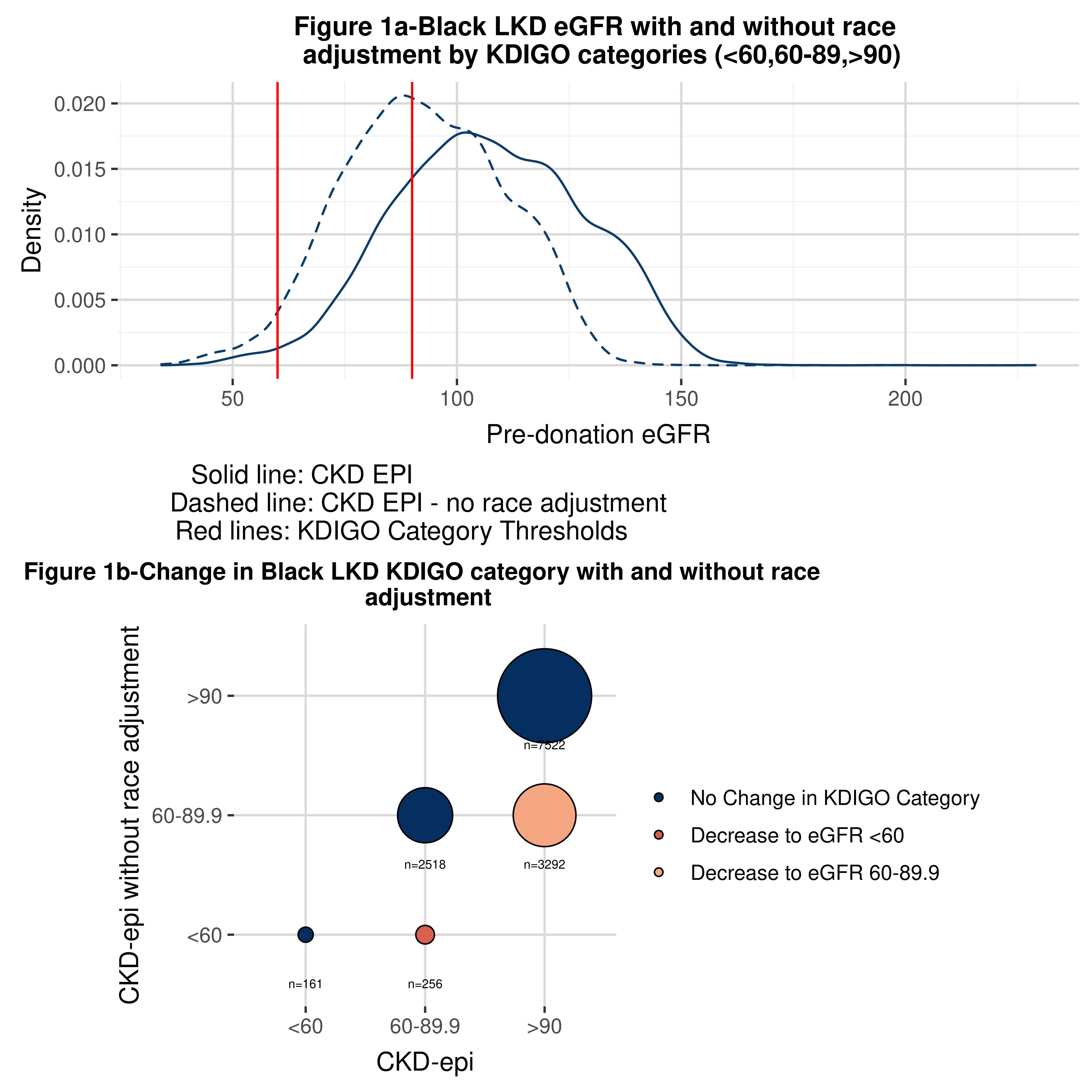The Effect of Including Race Adjustment in EGFR for Black Living Kidney Donors
UNOS United Network For Organ Sharing, Richmond, VA
Meeting: 2022 American Transplant Congress
Abstract number: 308
Keywords: Kidney, Living donor
Topic: Clinical Science » Kidney » 50 - Health Equity and Access
Session Information
Session Name: Health Equity and Access I
Session Type: Rapid Fire Oral Abstract
Date: Monday, June 6, 2022
Session Time: 5:30pm-7:00pm
 Presentation Time: 5:50pm-6:00pm
Presentation Time: 5:50pm-6:00pm
Location: Hynes Ballroom C
*Purpose: Current discussions about the calculation of estimated glomerular filtration rate (eGFR) have spurred studies on Black patients’ access to kidney transplantation, but less research has explored the potential impact on Black living kidney donors’ (LKDs) consideration for living donation. This current study examines racial differences in adjusted and unadjusted eGFRs of LKDs.
*Methods: We examined LKDs between January 1, 2000 and March 31, 2020 using OPTN data. eGFR was calculated with and without the race adjustment using the formula for CKD-EPI. Density and balloon plots were created of race adjusted and unadjusted GFRs by the KDIGO categories used for the evaluation of potential LKDs (i.e. ≥ 90 – acceptable, 60-89 – case by case basis, and <60 - below threshold). We fit multivariable linear regressions to examine whether there are racial differences in eGFRs calculated with and without the race adjustment between Black and White LKDs, while accounting for two other factors in the calculation of eGFR - donor age and sex. Nearest neighbor matching on race by age and sex was performed to reduce bias in our regressions.
*Results: Of the 123,002 LKDs, the majority were female (60.9%), White (70.0%), not biologically related to the recipient (44.2%), and from neighborhoods with middle to low neighborhood incomes (55.9%). Figures 1a and 1b indicate that without the race adjustment in the calculation of eGFR, 40% of Black LKDs with an eGFR ≥90 would have fallen to the intermediate range of 60-89. Ten percent who initially had an eGFR between 60 and 89 would have fallen below 60. Regression analysis indicated that Black LKDs had higher eGFRs than White LKDs with the race adjustment (β = 11.5, p <.00001), while they tended to have lower eGFRs than White LKDs when the calculation was not adjusted for race (β =-3.23, p <.00001).
*Conclusions: After the removal of the race adjustment, Black LKDs had lower eGFRs in comparison to non-Black LKDs. Furthermore, removing the race adjustment for eGFR resulted in some Black LKDs’ eGFRs moving from an acceptable range to one that would have been evaluated on an individual basis. Some would have fallen below KDIGO thresholds for becoming a LKD. Black candidates already face barriers to becoming LKDs, and therefore discussions about removing the race adjustment from eGFR should also ensure that they are not further disadvantaged.
To cite this abstract in AMA style:
Henderson A, Robinson A, Noreen S, Cartwright LA, Mupfudze TG, Cherikh WS, Klassen D, Wainright J. The Effect of Including Race Adjustment in EGFR for Black Living Kidney Donors [abstract]. Am J Transplant. 2022; 22 (suppl 3). https://atcmeetingabstracts.com/abstract/the-effect-of-including-race-adjustment-in-egfr-for-black-living-kidney-donors/. Accessed December 18, 2025.« Back to 2022 American Transplant Congress

